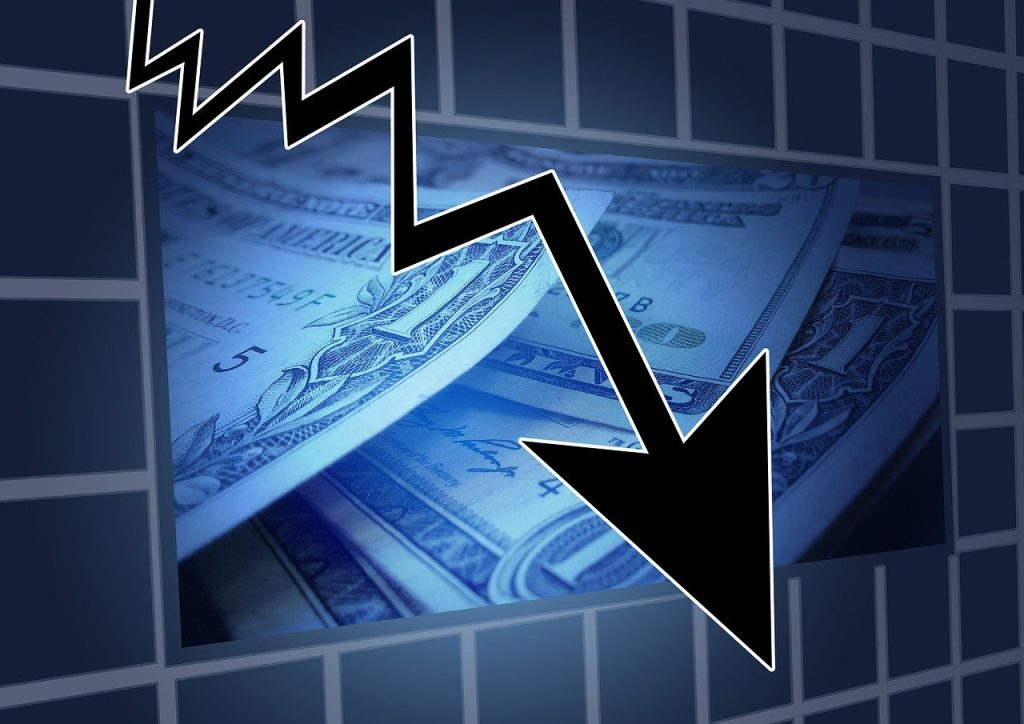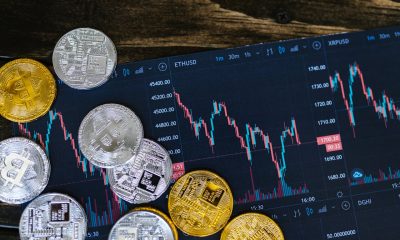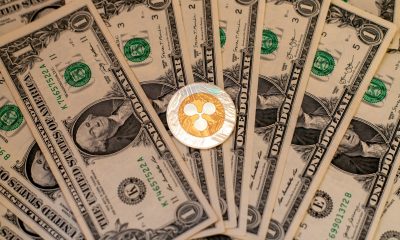Business
The Soft-Landing Narrative Is a Myth: The US Recession Is Not Canceled
The Fed’s balance sheet expansion was one of the main drivers of asset prices and liquidity in the aftermath of the pandemic, as it injected trillions of dollars into the system through various programs. However, as the Fed unwinds its balance sheet, it creates a reverse effect, draining money from the markets and putting downward pressure on asset prices.

The US recession is merely delayed, not canceled. The soft-landing narrative is a myth.
The government’s fiscal stimulus in 2023 has temporarily lifted the GDP growth rate. However, fiscal stimulus is not a reliable source of economic growth. It undermines productivity in the long term. It also creates problems such as higher taxes, higher interest rates, and harmful destabilizing inflation.
While it is true that consumers and businesses have locked in low interest rates, this also means that banks and other lenders must deal with a lot of mortgage-backed securities, consumer loans, and corporate debt that is significantly underwater. This is one of the problems faced by the US banking system and why it required the Fed’s bail-out intervention in March.
In addition, households and businesses had trillions of dollars in excess pandemic savings. However, those savings will be exhausted by the end of Q4.
So, while all these points explain why GDP growth has remained positive, the main reason the recession has been delayed is Powell’s Bank Term Funding Program (BTFP), which temporarily bailed out the entire US financial system.
The BTFP is an extension of the Discount Window, which is always open to stressed banks. The Discount Window offers to take banks’ underwater assets for three months with a discount from their current market value. In contrast, the BTFP offers banks a loan for one year and at full value.
However, this is not the same as QE, where the Fed permanently takes bad assets away from the bank and, in exchange, gives the bank reserves, or fed credit, for the purchase and then promises to buy more of these same assets in the future—pushing bond prices up and interest rates down. This new program requires the bank to buy back the assets at full value within 12 months and charges them an interest rate that is now near 5.5%. That is why, as the BTFP stands now, it only offers a temporary reprieve for banks.

Here is why the recession will not be held in abeyance much longer:
The net percentage of banks tightening lending standards is now at 50.8%. That is a massive 82.3 percentage points of tightening since 2021. The monetary fuel behind asset bubbles and consumption is running dry. The consequences of this monetary contraction are likely to be felt soon as the economy adjusts to a lower level of liquidity and demand.
The yield curve has been inverted for 14 months and is upside down by a steep 70 bps. This is the longest and steepest inversion in 43 years. Curve inversions are not just a coincident indicator. The yield curve measures the difference between the interest rates on short-term and long-term bonds, and when it is inverted, it means that investors expect lower returns in the future than in the present. It also puts banks under pressure because their assets are earning less than what depositors require to keep their money in the bank.
The effective interest rate banks charge each other for overnight loans, known as the Fed Funds Rate (FFR), has increased from a negative 8% to a positive 2%. This means that monetary policy has become less accommodative and more restrictive. Monetary tightening works with about a one-year lag. The FFR was just 2.5% at this time last year.
The annual growth rate of the M2 money supply has turned negative after a massive surge of over 40% following the pandemic. The Fed’s balance sheet, which reflects its interventions in the financial markets, has also shrunk by $600 billion in the past six months, indicating that the central bank is withdrawing its support for the economy.
The Fed’s balance sheet expansion was one of the main drivers of asset prices and liquidity in the aftermath of the pandemic, as it injected trillions of dollars into the system through various programs. However, as the Fed unwinds its balance sheet, it creates a reverse effect, draining money from the markets and putting downward pressure on asset prices.
The National Federation of Independent Business (NFIB) and Leading Economic Indicators (LEI) clearly warn we are heading for a recession. Delinquencies on consumer loans, credit cards, and auto loans are at a decade high. Interest coverage ratios for US businesses (EBIT/Interest expense) are falling.
This means that companies have less ability to service their outstanding debt. Zombie and Junk-rated firms employ millions of people and require low borrowing costs to survive, which are no longer available. There is a large corporate debt maturity wall for the next two years. $1.8 Trillion worth needs to be refinanced at much higher rates. Households’ real incomes will continue to suffer as energy prices rise.
Even the Jobs market is showing some cracks. The jobs market research firm Challenger Grey and Christmas reported that corporate layoff plans are up 210% from last year. These are planned layoffs that have yet to occur. Meaning the unemployment rate is about to rise.
And then we have the frozen real estate market—mortgage purchase applications are down 27%, and re-fis are down 31% y/y. Borrowing costs have surged while the home price-to-income ratio is at an all-time high. Meanwhile, homeownership affordability is at an all-time low. According to the National Association of Realtors (NAR), only 23% of homes in the US are affordable to the first-time homebuyer. That number was 50% a year ago.
Real Estate transactions are in a depression, and so are cash-out refinancings, which have provided a huge support for consumption. Since investors own 20-25% of all single-family homes, I expect a huge number of homes for sale to hit the market once rental income dries up due to a distressed labor market. And, once home prices begin to fall, investors will trip over themselves to cash out of the imputed 43% gain in home prices over the past two years.
By the way, US strength—if you believe in that narrative—is peculiarly isolated in the world. The EU is bouncing in and out of recession while the rest of the developed world economies are struggling. China, which brought the world out of the GFC by borrowing a massive amount of money in order to build the biggest fixed asset bubble in history, is now a debt-disabled economy—and hence is no longer able to rescue its own economy, let alone the global economy.

The simple truth is that there will be a much better time to get more aggressive with stocks
Not when the price/sales ratio is near a record high. Not when the TMC equities/GDP is close to a record high. Not when the dividend yield on the S&P 500 is about 400 bps lower than what you can receive on a T-bill. And not when the equity risk premiums are near zero. The earnings yield from stocks offers no opportunity above owning Treasury bonds. Investors are just not receiving compensation for the additional risk associated with stocks.
However, when you add the recent spike in oil prices into this mix, you get a Fed that isn’t even thinking about cutting interest rates at this moment. But Powell is in for a shock. Given that the economy is about to surprise to the downside in a big way, I believe the Fed will be in interest-rate-reduction panic mode sometime in 2024. And therein lies a big opportunity for astute investors.
__
(Featured image by Karolina Grabowska via Pexels)
DISCLAIMER: This article was written by a third party contributor and does not reflect the opinion of Born2Invest, its management, staff or its associates. Please review our disclaimer for more information.
This article may include forward-looking statements. These forward-looking statements generally are identified by the words “believe,” “project,” “estimate,” “become,” “plan,” “will,” and similar expressions, including with regards to potential earnings in the Empire Flippers affiliate program. These forward-looking statements involve known and unknown risks as well as uncertainties, including those discussed in the following cautionary statements and elsewhere in this article and on this site. Although the Company may believe that its expectations are based on reasonable assumptions, the actual results that the Company may achieve may differ materially from any forward-looking statements, which reflect the opinions of the management of the Company only as of the date hereof. Additionally, please make sure to read these important disclosures.

-

 Impact Investing1 week ago
Impact Investing1 week agoCOP30: Fragmented Climate Politics, Multi-Speed Transition, and Emerging Investment Opportunities
-

 Biotech2 days ago
Biotech2 days agoSalmoss Biotech: Turning Salmon Waste Into Breakthroughs in Regenerative Medicine
-

 Markets2 weeks ago
Markets2 weeks agoRice Market Rebounds from Oversold Lows Amid Weak Demand
-

 Crypto1 week ago
Crypto1 week agoEthereum in 2025: Volatility, Maturity, and Strategic Renewal

























